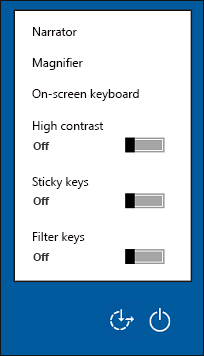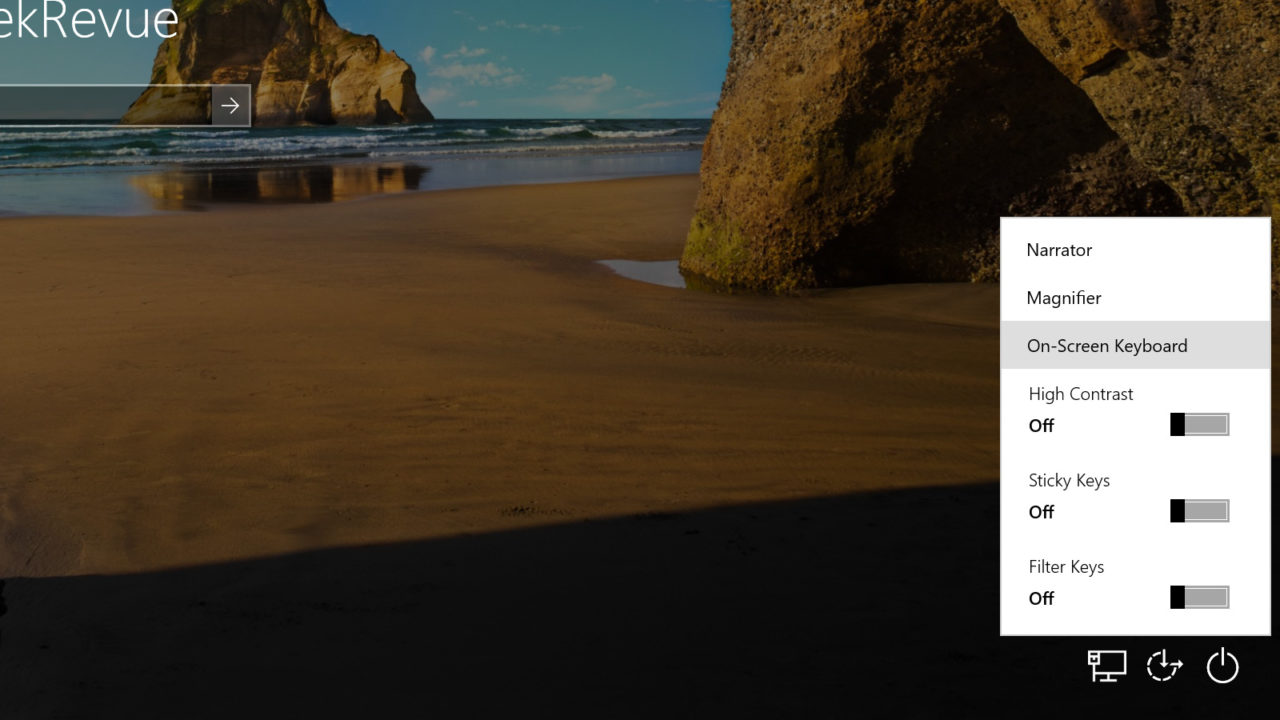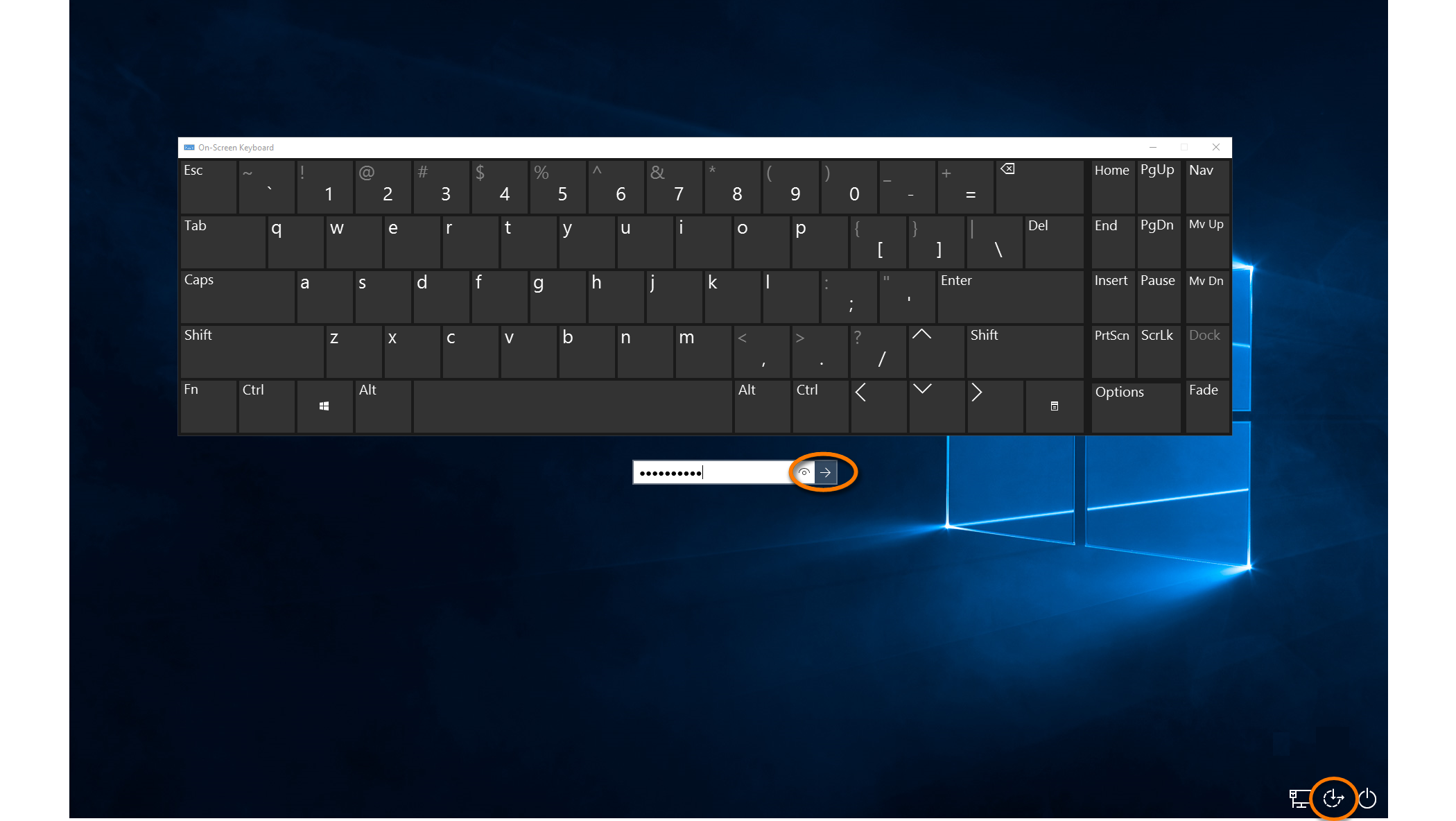

- #VIRTUAL KEYBOARD WINDOWS 10 LOGIN SCREEN HOW TO#
- #VIRTUAL KEYBOARD WINDOWS 10 LOGIN SCREEN UPDATE#
- #VIRTUAL KEYBOARD WINDOWS 10 LOGIN SCREEN DRIVER#
- #VIRTUAL KEYBOARD WINDOWS 10 LOGIN SCREEN CODE#
- #VIRTUAL KEYBOARD WINDOWS 10 LOGIN SCREEN PASSWORD#
#VIRTUAL KEYBOARD WINDOWS 10 LOGIN SCREEN DRIVER#
Keyboard driver update? Why, since it works fine when the OS lets it. The real keyboard back on during startup? And thus the question I originally posed: is there a toggle to switch
#VIRTUAL KEYBOARD WINDOWS 10 LOGIN SCREEN UPDATE#
How that happened with an update from win 8 to win 10 is worthy of referral to the development group. Keyboard or a virtual one (eg, if installed on a device that had no real keyboard). Press Windows + X keys, then click Control. In this instance, MS is trying to do the same thing: a common UI across radically different devices. Use these steps, you can disable the On-screen Keyboard using in Ease of Access Center. On the Windows 10 login screen, this icon is located on the bottom-right corner of the screen. XP Open the Start Menu and go to All Programs, Accessories, Accessibility, and select On-Screen Keyboard. Use it for visual reference when typing with an unfamiliar keyboard layout, or type by clicking on symbols on the virtual keyboard. The method is an icon toggle:Ĭlick it once - no menus etc, click it again, menus tool bars etc displayed. It looks like a dotted circle with arrows pointing down and to the right. Windows On-Screen Keyboard On-Screen Keyboard displays the keyboard layout that is currently in use.
#VIRTUAL KEYBOARD WINDOWS 10 LOGIN SCREEN CODE#
No programmer or marketer has apparently thought to require a device specific face when the code is installed. Crazy, and it drives faithful users nuts. On small devices is not used by mundane things like menus and tool bars. I have struck it in other apps, most recently the firefox UI for version 39 or later, whereby the developer is trying to present a common UI for every device - PC, laptop, tablet, smartphone etc, so the available image space Is failed - the OS just doesn't recognise it during start-login.

It's not as if the physical keyboard itself Plugin via a usb slot? Maybe, but if the built in one doesn't work in the start-login phase I see no reason to expect an external/usb-connected one would. I know this is a few months old, but the setting is here in case any of you are still looking for this: HKCUSoftwareMicrosoftTabletTip1.7EnableDesktopModeAutoInvoke. 4 Now, Click on Action and then click on scan for hardware changes. 3 Once the Device manager Opens up, just uninstall Keyboard driver software.
#VIRTUAL KEYBOARD WINDOWS 10 LOGIN SCREEN HOW TO#
It's a laptop - using another keyboard is pretty hard. Here is how to Fix Keyboard Not Working Issue In Windows 10. yes, after login using the virtual keyboard (a querty image displayed on the screen when the virtual keyboard icon is clicked using the mouse, and then operated by 'touch'), the actual laptop keyboard is enabled and operates normally with installed applications,Ģ. ComputerHKEYLOCALMACHINESOFTWAREMicrosoftWindowsCurrentVersionExplorer.

Type regedit and press Enter to launch the Registry Editor. In a Wayland session KWin provides the integration and Qt apps (and other apps) get the virtual keyboard through the Wayland text input protocol.1. To resize the Windows 10 touch keyboard, follow these steps: Open a Run dialog by pressing Win + R. When entering text Qt pops up the virtual keyboard as an additional window. One just needs to specify the env variable QT_IM_MODULE=qtvirtualkeyboard. It’s possible to use Qt’s virtual keyboard for all Qt application. I hope that the new virtual keyboard can help here by providing a better experience.Īs a note to our touch screen users. As a side effect this meant that only latin characters can be used in the password. So far we had to actively disable input methods on the lockscreen to prevent that the screen cannot be unlocked. Virtual Keyboard in the lock screenĪs a nice side effect this finally enables the possibility to enter east Asian languages in the lock screen.
#VIRTUAL KEYBOARD WINDOWS 10 LOGIN SCREEN PASSWORD#
When clicking this button the virtual keyboard gets enabled and one can use it (with both touch and mouse) to enter the password and unlock the screen. The lockscreen got extended by a new button next to the keyboard layout switcher: “Virtual Keyboard”. This change, though, can be used on both Wayland and X11.

Support for Qt’s virtual keyboard is not new in Plasma in general, it is already fully integrated into the Plasma Wayland session. Plasma 5.10 finally integrates qtvirtualkeyboard directly in the lockscreen component of the look and feel package. As part of our efforts to improve out of box experience for touch screens I’m pleased to announce that Plasma 5.10 will provide integration for virtual keyboard.


 0 kommentar(er)
0 kommentar(er)
